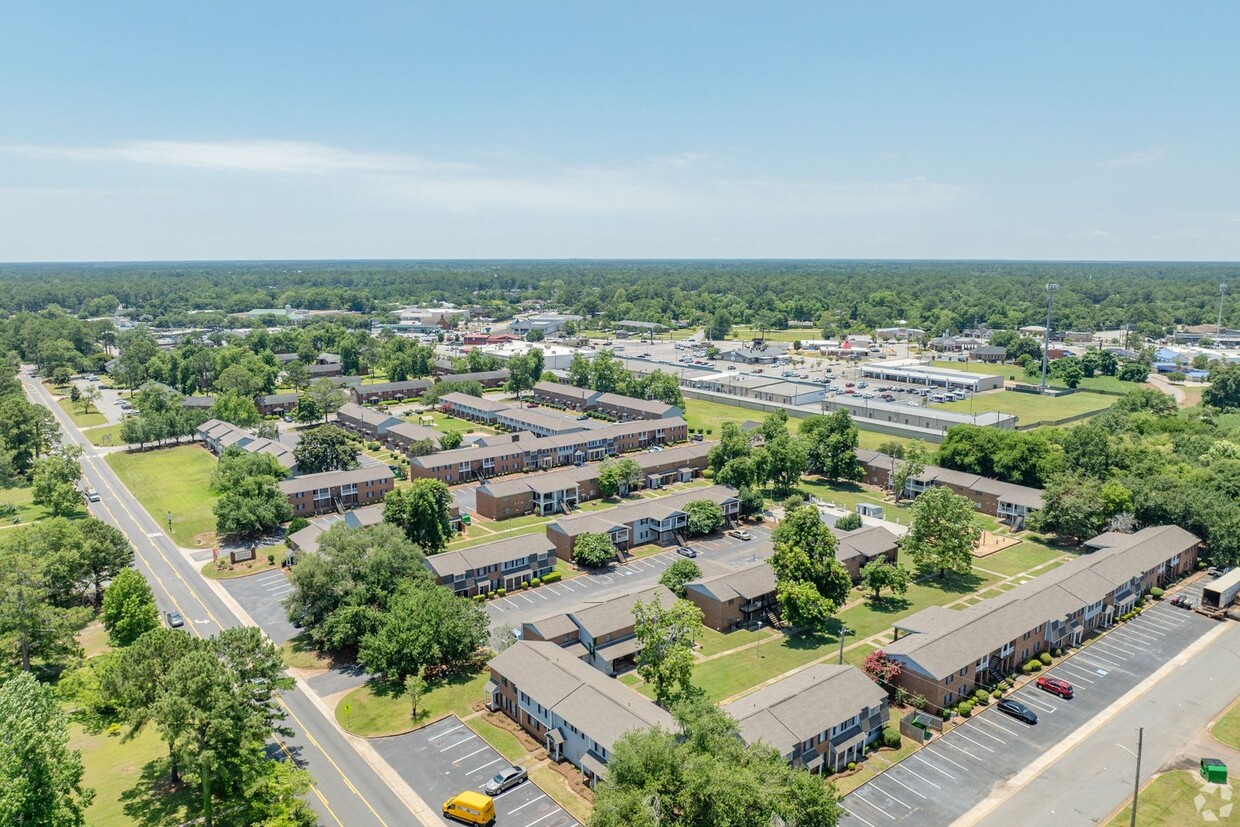5 Reasons to Invest in Multifamily Real Estate
5 Reasons to Invest in Multifamily Real Estate
Multifamily real estate investment is gaining traction as a smart avenue for steady income and capital appreciation. This form of investment involves purchasing a property that houses separate units, each of which can be rented out to tenants. There are several notable reasons to invest in multifamily properties, including portfolio growth, passive income opportunities, numerous financing options, the high demand for housing and various cost efficiencies. A financial advisor can help you determine whether real estate is a good asset class for you.
What It Means to Invest in Multifamily Real Estate
Multifamily real estate investing involves purchasing and managing residential properties with multiple units, like apartment buildings, multiplexes or townhouses. This investment strategy offers a range of benefits and considerations for investors looking to diversify their portfolios and generate steady income. But multifamily real estate investing does come with considerations. Effective property management is crucial, as dealing with multiple tenants and maintenance can be complex. Investors need to allocate time and resources for property upkeep, tenant relations and potential legal matters. Market research is vital when venturing into multifamily real estate. Understanding local rental demand, property values and neighborhood trends helps in making informed investment decisions. Financing options and interest rates also play a significant role, affecting the overall profitability of the investment.
Reasons to Invest in Multifamily Real Estate
There are several compelling reasons to consider investing in multifamily real estate, including the cost efficiencies of managing multiple units, passive income opportunities and more. Here’s a look at five of the biggest reasons to invest in multifamily real estate:
Portfolio Growth Takes Less Time
Unlike single-unit properties, multifamily units generate multiple streams of rental income under a single roof. This consolidated approach not only enhances cash flow potential but also provides a buffer against vacancies. Even if one unit is unoccupied, others can continue contributing to your revenue. Investing in multifamily real estate can also help you to diversify your portfolio beyond traditional stocks and bonds – and potentially grow your portfolio faster. Real estate often exhibits low correlation with other asset classes, potentially mitigating overall risk.
Passive Income Opportunities
Properties that generate multiple streams of rental income provide a reliable source of passive income. A cash-flowing rental property is like a dividend stock, only it pays out every month. The tax advantages associated with multifamily real estate investment are also substantial. Expenses, interest payments and depreciation can lead to significant deductions, potentially reducing your overall tax liability.
Cheaper to Manage Than Single-Family Properties
Managing several units within the same complex can lead to cost efficiencies. Maintenance, property management and certain operational expenses can be shared among units, optimizing your financial outlays and bolstering your bottom line.
The cost of maintaining shared amenities like gyms, pools or common areas is distributed among all residents. This shared responsibility minimizes the financial burden on individual investors compared to single-family properties.
Furthermore, as you scale up the number of units in your portfolio, professional property management becomes an increasingly viable option. Hiring a property manager frees up your time and ensures that the property is well-maintained, minimizing headaches on your end.
Easier to Finance than Other Real Estate
Multifamily properties can enjoy a distinct advantage when it comes to financing. Lenders may be more inclined to provide loans for multifamily properties due to their potential for generating steady cash flow through multiple rental units. This makes it easier for investors to secure financing at favorable terms, leveraging the property’s inherent income-generating capacity.
High Demand
Urbanization and demographic shifts continue to drive demand for multifamily housing. This sustained demand can translate into long-term rental stability and income growth. Even during economic downturns, people need housing, reducing the risk associated with income disruptions.
In an evolving real estate landscape, multifamily properties are well-positioned to accommodate shifts in market demand. Economic fluctuations often drive individuals toward rental housing, making multifamily investments resilient in challenging times.
How to Determine the Profitability of Multifamily Investments
Determining whether a multifamily property will produce cash flow is crucial when deciding whether to invest. There are several ways to gauge the potential profitability of a multifamily investment:
The 1% Rule
The 1% rule provides a straightforward yardstick for evaluating rental properties. Simply put, the monthly rental income should ideally be equivalent to or exceed 1% of the property’s total purchase price. This rule of thumb can help you swiftly filter through potential multifamily properties and narrow down prospects that warrant a closer examination.
While the 1% rule provides a swift initial assessment, prudent investors should acknowledge its limitations. It should only serve as the launchpad for deeper exploration rather than the sole determinant of investment decisions. By coupling the 1% rule with a thorough due diligence process that examines vacancy rates, potential appreciation and local market trends, investors can make astute choices that align with their financial objectives.
The 50% Rule
Like the 1% rule, the 50% rule is a rough calculation that can help investors determine whether a potential investment will be profitable. The rule assumes that 50% of a property’s rental income will be used for expenses, excluding the mortgage payment. If the remaining income can cover the mortgage payment and provide a reasonable profit, the investment can be considered profitable. It’s important to remember, however, that this rule is a rough estimation, and real expenses may vary significantly.
Consider Other Factors
Other factors that can significantly affect the profitability of multifamily investments include the property’s location, market trends, condition of the property and management efficiency. A property in a high-demand location with a growing rental market will likely be more profitable than one in a stagnant or declining market in the long run.
Financing Options for Multifamily Real Estate Investments
There are various financing options available to prospective investors in multifamily real estate:
Mortgage Loans
These include conventional mortgages, FHA loans and commercial loans – each with varying interest rates, down payment requirements and terms. These variables should be carefully weighed to determine the best fit for the investor’s financial situation and investment goals. For example, FHA loans typically have lower interest rates and require smaller down payments than conventional loans, but they also include mandatory mortgage insurance premiums. You’ll also have to live in the property for a least a year in order to qualify for an FHA loan.
Private Money
While private money can provide quick funding, it often comes with high-interest rates and short repayment terms. Private lenders are typically less concerned with the borrower’s credit score and more focused on the property’s potential profitability. This option should be considered within the context of the potential investor’s overall financial situation and risk tolerance, reinforcing the complexities and potential risks of real estate investments.
Partnerships
Partnerships can help investors pool resources and share risks. However, it’s crucial to have clear agreements about responsibilities and profit sharing to avoid potential disputes. Here, a legal advisor can help draft partnership agreements to protect each party’s interests.
Bottom Line
Multifamily real estate presents a promising investment opportunity. However, determining the profitability of such investments and understanding the various financing options available is vital to success in this arena. You may want to consider investing in multifamily properties for a number of reasons, including portfolio growth, the high demand for housing, the various available financing options, cost efficiencies and passive income creation. However Investments in Multifamily housing can be very tricky. Don’t venture down this road alone We live it and breath the industry. At SIMM Capital our investment strategy is to give everyone the chance to build wealth through real estate. We seek the best assets that hold the largest opportunities while delivering in rent growth year over year. We know the business. To see how we can help you with your Real Estate investments talk to an expert and click the link www.simminc.com




Recent comments